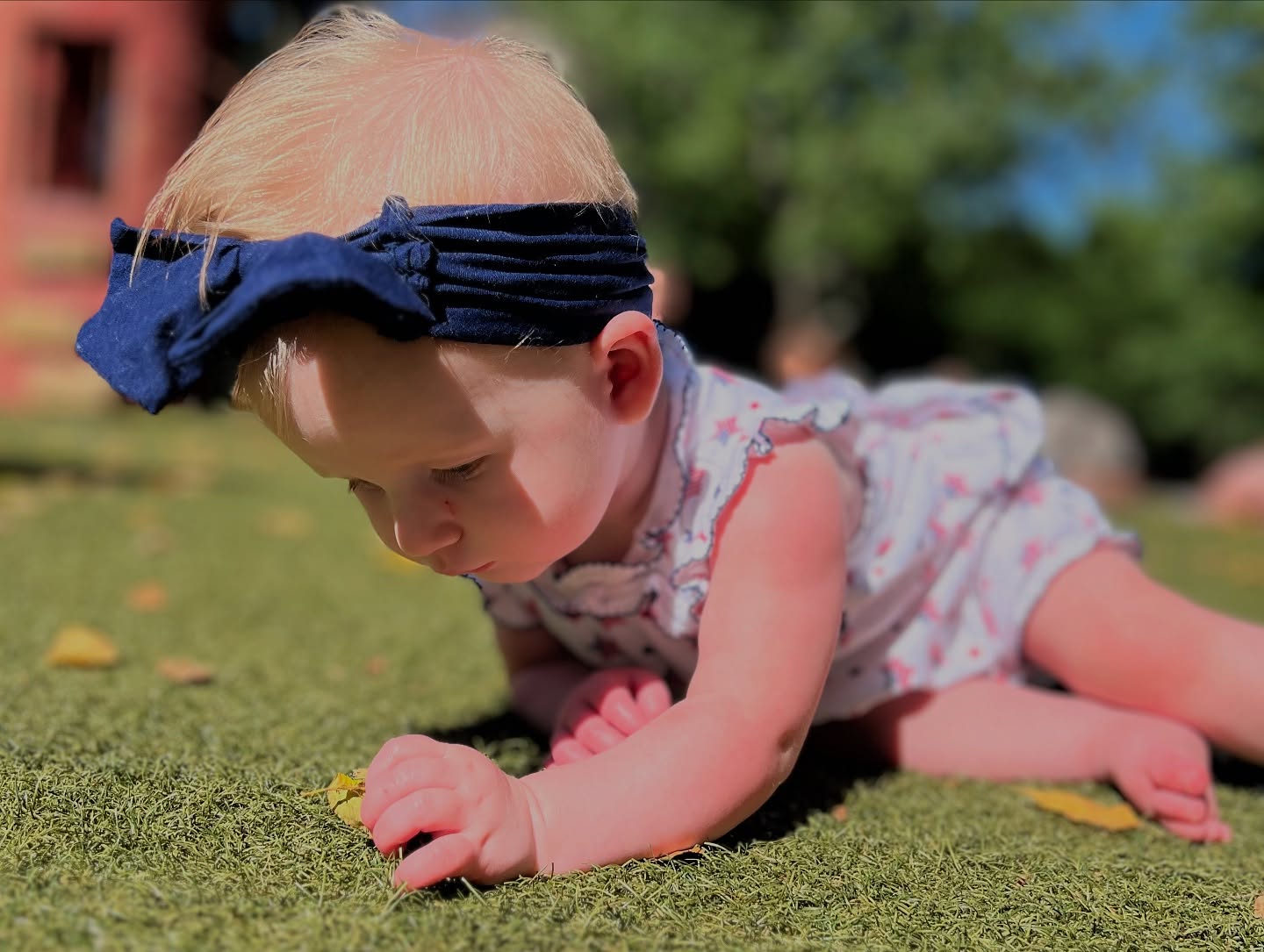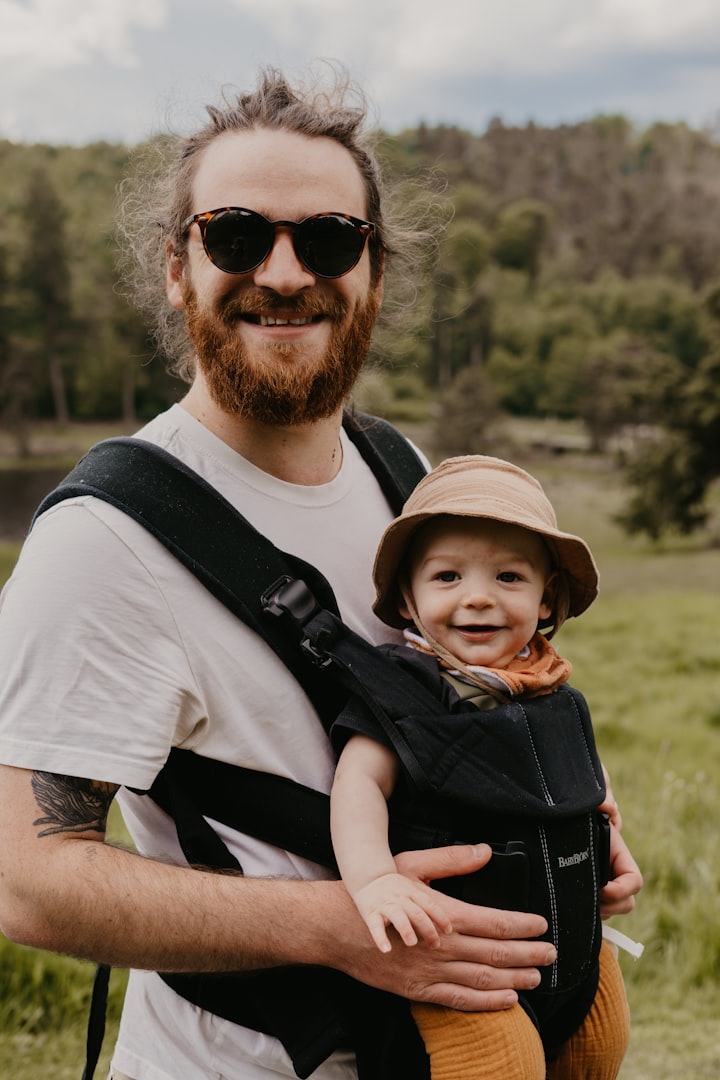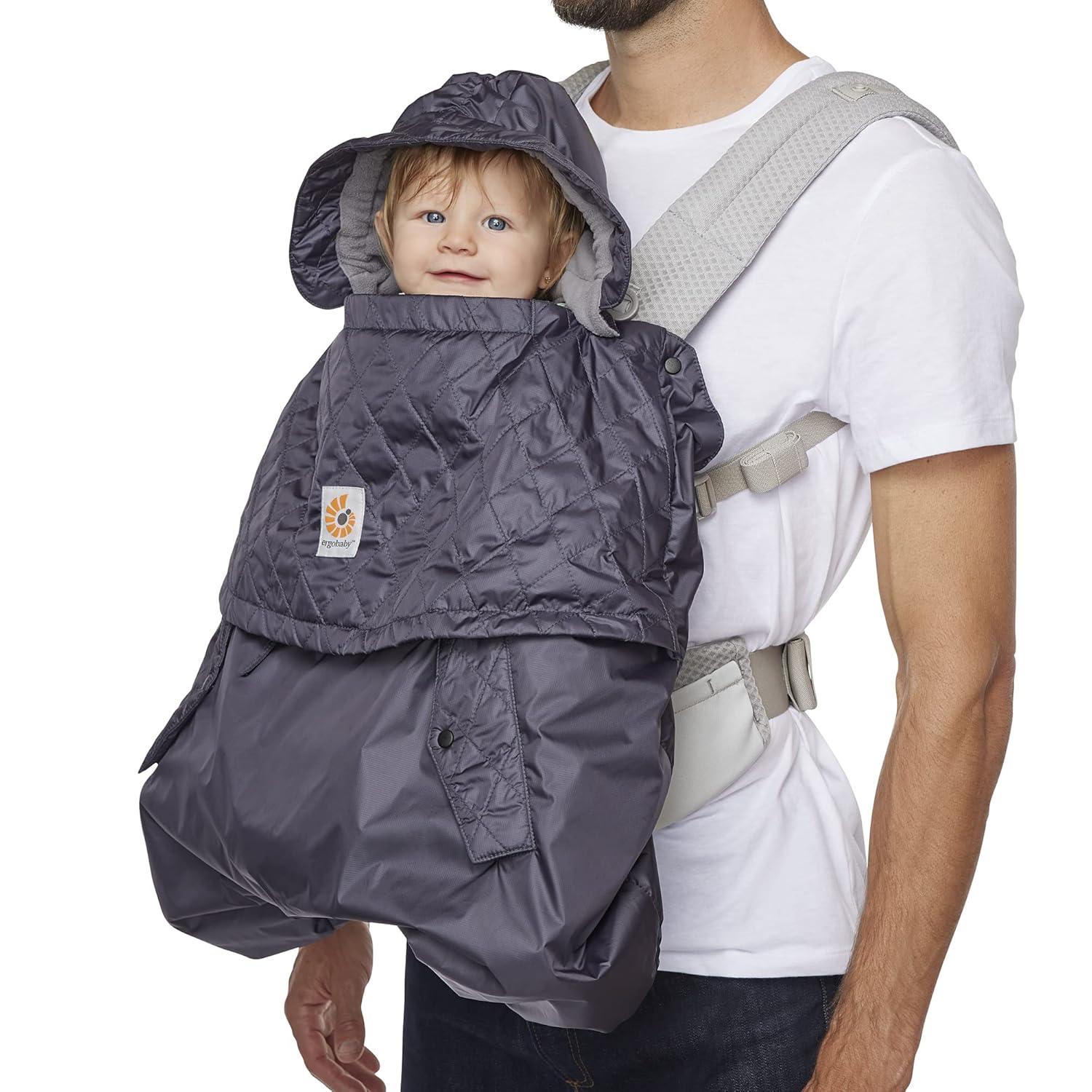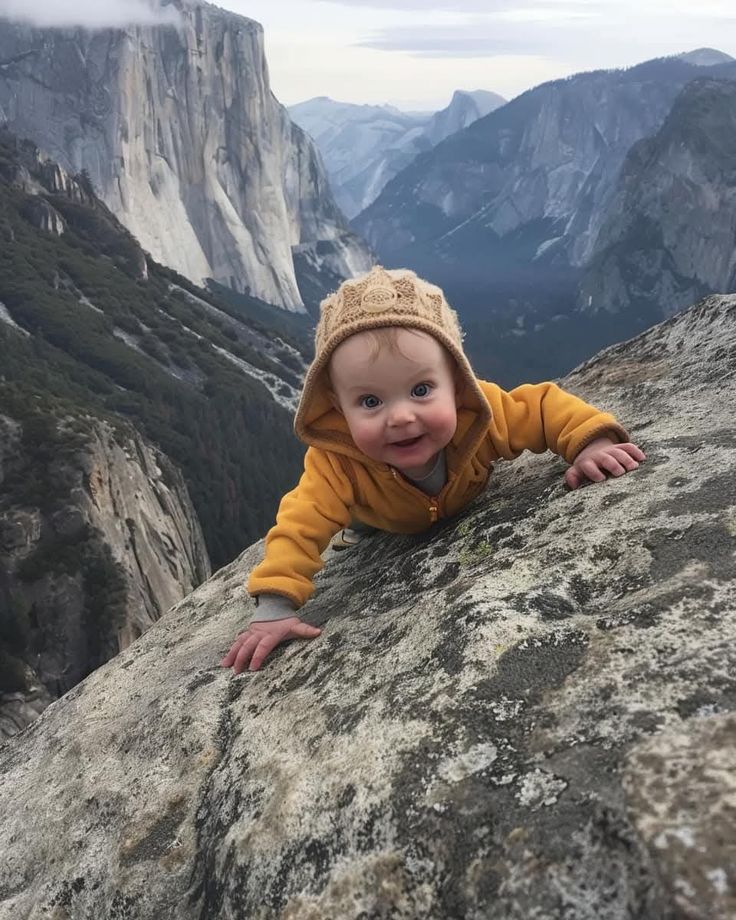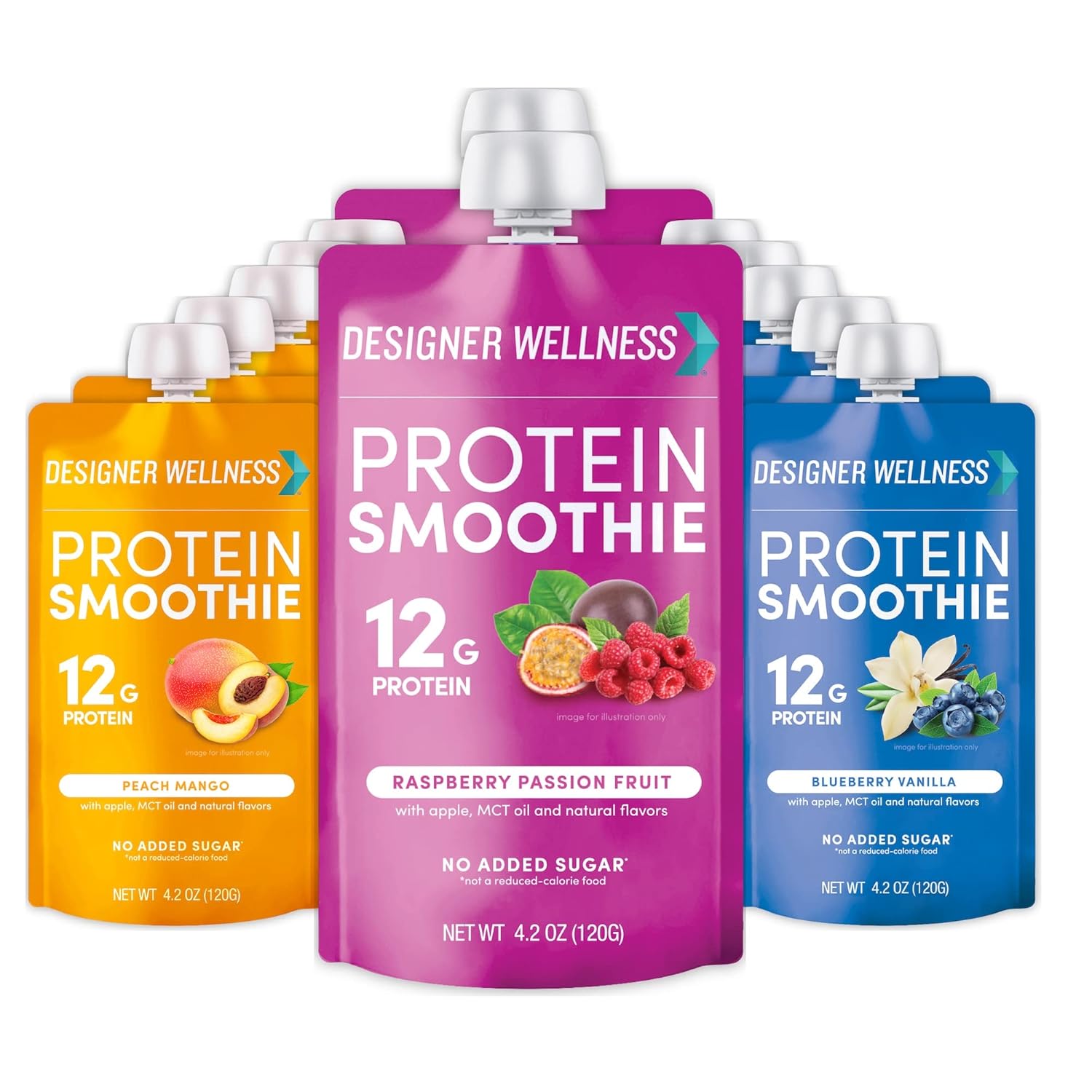Babies Hiking with baby Planning adventures
Our Incredible Baby Adventures
Fresh air and sunshine have well-documented benefits, but being outside is good for your baby in other ways too. Their senses are stimulated by the visual contrast of trees or buildings against the sky overhead, a breeze on their face, and new scents and sounds. Spending time outside can also improve language skills—and maybe even their sleep.
How do I protect my baby from the sun?
The sun is our friend: it makes plants grow, keeps us warm, and helps us see the world around us. But it is true that a baby’s skin is especially sensitive to the sun’s rays. Here are some tips to help protect your baby from the sun:
Avoid the sun during the hottest part of the day between 10am-2pm. Stay in the shade, and remember that reflected light can also be harmful. Water, sand, and snow are three big reflectors, so just be aware of your surroundings! The morning sun is best for them.Exposure to sunlight plays an important role in how our bodies secrete melatonin, often referred to as the “sleep hormone.”
The FDA doesn’t recommend sunscreen for babies 6 months and under, so put a hat on their head and use a sun shield on the carrier or stroller. Babies should not be outside for prolonged periods when the temperature is over 90°F.
To introduce babies to fresh air safely, dress them appropriately for the weather, keep them in the shade to protect their sensitive skin from sun exposure, and gradually increase the length of outdoor excursions as they get comfortable.
Superscript
WaterPLAY, Hiking And Camping Adventures with Baby
Preparation And Tips
To successfully include a baby in nature adventures, ensure proper clothing for the weather and go outside for short, frequent periods to provide sensory experiences like feeling grass or listening to birds. Use carriers or strollers for walks, let baby feel and smell leaves and soil, point out animals and sounds, and offer simple experiences like playing in the backyard or on a porch. Safety measures include sun protection, checking for ticks, and avoiding potentially dangerous plants.
♥
Our Series for Babies And Tots
Exploring The World
Exploring The World
-
-
-
-Adventures for Exploration
You will have all the links and Information at your finger tips
1. Start By Taking Your Baby Outside Early:
Take your baby outside as soon as it's safe to do so, even for just a few minutes in the morning. However, remember that seasonal outdoor naps and daily walks in the fresh air are great for both baby and mom.2. Dress Appropriately:
Dress your baby in layers suitable for the weather, ensuring they are warm enough in cool weather and have light, protective clothing in the sun.3. Keep It Simple:
You don't need elaborate activities; a blanket in the backyard or a short walk is enough for a baby.
Feel Textures: Let your baby touch soft grass, rough tree bark, leaves, or even soil.
Listen to Sounds: Point out bird sounds, rustling leaves, or the sound of water.
Observe Sights: Look at birds flying overhead, animals, flowers, and the sky.
Smell Nature: Let your baby experience the smells of flowers, honeysuckle, or damp earth.
Go for Walks: Take short walks in a park, on nature trails, or around your neighborhood.
Relax Outdoors: Lay a blanket in the grass for tummy time or to simply look up at the sky.
Use Your Backyard: Explore the textures of the grass and dirt, or simply sit on the porch.
Play with Water: Visit a stream or play in puddles, letting your baby splash or feel the water.
1. Sun Protection:
For babies under six months, keep them out of direct sunlight and use lightweight clothing and hats. For older babies, use baby-specific sunscreen with an SPF of 30 or higher.2. Check for Ticks:
In wooded or grassy areas, check your baby for ticks after being outside, as they can carry diseases.3. Beware of Poisonous Plants:
Learn to identify dangerous plants like poison ivy and oak in your area.4. Be Aware of Your Surroundings:
Stay vigilant for other potential hazards, such as insect stings or choking hazards, and never leave your baby unattended.
11 Ways to Prep for Adventure With Baby
Part One:
Travelling with a new baby can feel daunting at first. But stick with it and you will be able to share all the things about being outdoors before you know it. When we first found out we were expecting a baby, we naively declared that we wouldn’t let our lives change too much. We’re travellers, we’re adventurers, we’re restless wanderers. You can do all that with a new little babe…right? We realized that yep…you sure can, it’s just going to look a whole lot different than you’re used to!
Once you can wrap your head around that, travelling as a family and creating memories all over the world could not be more rewarding. While some may argue that your babe may not remember these trips at such a young age, we’re firm believers that travel will influence your little one in the best ways and will help shape the bond your family will share for a lifetime. While we don’t claim to be experts in any way, there are a few things we learned in the first year of Ollie’s life that made exploring with a baby just a little bit easier.
california
Getting Out
1.) Get out there
The first piece of advice we have that we can’t repeat enough: Get out there. Of course, this may look differently depending on each family, but it was important for us to get outside as soon as we felt comfortable after Ollie’s arrival. This might not mean getting out into the forest or up into the mountains right away, but for us, it was a trip to Costco after 7 days. We realized that the more we got used to getting out and about, the easier it became, and the more Ollie got used to being on the go. Packing supplies becomes second nature and packing up the stroller and car seat becomes routine. After walks around the neighbourhood parks and to our favourite coffee shops became comfortable, we started venturing out for hikes in Ollie’s carrier.
2.) Make it easier on yourselves
While you’re still getting used to navigating your gear and getting your baby to and from different places, practice packing your diaper bag, folding up your stroller and putting on your carrier. Make it easier on yourselves by investing in quality gear that will encourage you and your family to get out as much as possible.
3.) Start Travelling before 6 months
We’ve heard countless times from various health professionals and seasoned parents that travelling between the ages of one month and six months is ideal for most families. Why? Your baby typically has very few needs, is likely not eating solids, and is not yet mobile! Take advantage of this time and travel as much as you can.
Related posts:
Sunshine Coast
On The Go
4.) Choosing accommodation
We choose between hotels or vacation rentals (VRBO, Airbnb, etc.) based on a few factors, as some hotels or resorts can be very accommodating for families.
Look for accommodations with ample space. It’s great to be able to put babe down to sleep for the night in a separate room so you can still enjoy your evening. However, if there’s a dark corner, extra bathroom, or even a large walk-in closet, these are all great places to put a travel crib!
We check for laundry facilities if we’re going for a more extended trip (washing machines are amazing and mean that you don’t need to pack as many onesies!), and air conditioning if it’s a warm destination. A kitchen is also convenient if you’re using bottles or preparing food.
Make sure your accommodation is stroller accessible! Many vacation rentals are walk-ups, and some international hotels don’t have ramps or elevators that strollers will fit in. We’ve been in elevators in Rome and Paris that even a small travel stroller would have been too big. You won’t want to lug everything up several flights of stairs!
Choose accommodation close to areas you want to explore. You won’t want to continually be packing up your family into an Uber or cab to head to various attractions. It’s nice to be able to walk!
5.) Sleep options
As mentioned, while not required, it’s nice to have a separate room for babe to sleep in. Keep things as DARK as possible. Alternatively, it may sound weird, but having baby sleep in a dark, quiet bathroom or large walk-in closet is another option! Some hotels or vacation rentals offer cribs or infant beds, so always check ahead. Otherwise, bring a travel bed that fits easily into your luggage, and make sure to have some of the comforts of home. We bring Ollie’s sleep sacks, sound machine, and blackout blinds with us to make bedtime a little easier. That said, we try to encourage him to sleep in different environments.
Kelowna
6.) Bathing options
Sink baths, holding a babe in the shower, or in the tub are all great options for bath time. Our personal fave has a family shower – with one person holding babe snug and the other doing the washing. There are also portable travel baths that you can buy if you can afford the travel space, we especially like the inflatable ones!
7.) Pack wisely
Don’t worry about bringing extra diapers or wipes. Save on space in luggage and buy them when you arrive! Instead, focus on bringing enough clothes – you’ll run through onesies like you wouldn’t believe.
8.) RESEARCHING YOUR DESTINATION
Check ahead for safety issues in the city, any health concerns for your babe, and locate the proximity of any local hospitals, clinics, or doctors to your accommodation. Consider the type of walking you’ll be doing – are there many hills, uneven roads or cobblestones? Will it be unusually hot or cold? Is it a rainy season? This will help to determine the type of gear you’ll need to bring and the mode of transportation once you arrive.
Lisbon
9.) Exploring the city
Research modes of transportation. Commuting in a new city can be stressful when you’re amongst locals! Are there buses, streetcars, trains, or Ubers? We often travel by train, and it’s suuuper helpful to find out ahead of time if certain cars are accommodating for luggage and/or strollers. We once found ourselves stuck on a jam-packed car on the London Tube for an hour ride from the airport, and all the locals glared and swore at us under the breath. (Honestly, yeesh! Talk about anxiety-inducing.) Turns out the stroller car was right next to us…ha…whoops!
Find local malls or department stores with family bathrooms or change areas, and take note of their location. It’s so great to have somewhere to go for an emergency blow out situations! A mall we went to in Lisbon even had a parents’ area with kitchen facilities, feeding areas for older toddlers, and private pods for nursing and changing. Some busy stores also have priority lines for families at check out, so keep an eye out.
Feed anywhere! Honestly, for us, it was all about somewhere comfortable to sit. In coffee shops, in a park, on the floor at a museum, we’ve done it all.
10.) Invest in quality gear
A comfy carrier that lightens the load on your shoulders and back and a light, easy to fold travel stroller can make all the difference in the ease of your trip.
11.) Set your expectations
We received some great advice from a fellow parent before leaving on our first overseas trip with Ollie. This wise mama told us, “don’t go expecting to be able to do all the things you used to do when you travel. Travelling with a family will be a whole different experience.”
They told us that suddenly we’d find ourselves going back to the hotel early, eating on the go at odd times (and skipping some of the less baby-friendly restaurants we’d typically want to try), and missing out on lots of attractions. If you set your expectations right off that bat that travelling with an infant will look very different, it allows you to really enjoy this new adventure. Travelling for us now is all about the memories we’re building as a family, and it couldn’t be more memorable. Instead of setting an agenda and stressing out about those bazillion things we want to do and try in every new city, we’ve really slowed down, taken it one day at a time, and enjoyed every second of exploring together. It’s been the most incredible lesson of all!
Whether wearing baby on a walk outside, strolling through a zoo or garden, picnicking in a park, exploring at the beach, or just smelling flowers in your backyard, there are so many ways to bring baby to nature in a safe way. Though the skills of a young naturalist will come later on, just being in nature will help babies develop in the most healthy ways. Read on to learn more.
We’re going to start with the benefits before baby has even arrived. Because, like most things during pregnancy, what you do before baby arrives will have an effect on baby’s health. Ideally, expecting moms should expose themselves to as much nature as possible during pregnancy.
For one thing, nature calms us. And a calm mother is a calm baby. Interestingly, studies find that pregnant mothers who live in greener areas and close to green spaces give birth to high-weight babies. And don’t skimp out on nature during the birth experience! Just looking at nature images during labor can have a positive benefit for both mother and baby.
Having a new baby is magical but, let’s be honest, it is a busy time. Of course, taking a baby anywhere requires extra effort. There’s bundling baby up to keep him or her warm in colder weather. There’s gear for hiking with the baby. And always the necessary belongings in the trusty diaper bag. It often seems easier to just stay indoors.
But don’t skimp out on nature or “greentime”.
With a myriad of mental, physical, sleep, and sensory benefits, nature should be an essential element in a baby’s life. Nature-inspired sensory experiences can support understanding of nature, how to treat it, and fosters a better love and understanding of the natural world. Not every experience needs to be a set task or activity. Our natural world and the environment offer a number of amazing avenues for exploration!
Sensory Smorgasbord
We’ve written previously about the sensory benefits of nature for children. This is true for babies too. Sensory play includes any activity that stimulates your young child’s senses: touch, smell, taste, movement, balance, sight, and hearing. Research shows that sensory play builds nerve connections in the brain’s pathways, which lead to the child’s ability to complete more complex learning tasks. Sensory play also supports language development, cognitive growth, fine and gross motor skills, problem-solving skills, and social interaction.
Nature of course is filled with sensory information that babies and children need for their developing brains. When you’re outside with your baby, remember all of the senses and let baby look, listen, smell, touch, balance as much as they can. Let them experience a prickly pinecone or soft moss. A crow’s caw. A soft breeze. Squishy mud. A fir tree. Warm sunshine. Cold snow. Light rain on their face. Ah, a sensory buffet. Consider adding a sensory trail or garden to your backyard if you can. The benefits will far outweigh the work!
The Language of Nature
While giving mini naturalists lessons is a bit early for the baby stage, there is no reason why you shouldn’t help foster baby’s language development by naming many of the wonderful things he or she sees in nature. Bees, flowers, trees, squirrels— what amazing friends surround baby in nature. Talking to your baby and naming objects in their world helps promote early language development. But familiarity with the natural world also helps to reduce the fear many children and adults have of nature. The more we know and understand nature, the less we fear it. So helping your baby develop a comfort level with butterflies, just as they are around Fisher Price’s latest gadget, will bring in lifelong benefits.
Moving with Nature
If you want to help your baby develop their motor skills, doing so in an outdoor environment can help them progress. Children acquire most of their basic motor skills before the age of five with much of the progress made within the first couple of months of life. Time outdoors helps facilitate the development of many of those skills even for babies, who benefit from observing others running around and playing. When outdoor playspaces are given a natural makeover with natural elements such as trees, sand, logs, sticks, stones, bark, and hay, as well as structures such as bridges and platforms, infants and toddlers show more variety in their movement and physical activities.
Immunity Booster
More variety in nature also includes more variety with regard to microbes. Which is excellent for baby's immune system! We now understand that, rather than protecting babies and children from germs, we should encourage healthy exposure. Microbes in nature boost immune system development. Rather than keeping baby in a sterile indoor environment, take them outside so they can build stronger immune systems for life.
Calming Nature
We all appreciate the benefits of sleep for babies. You may have noticed that your baby is a better sleeper after he or she has spent the day outdoors. You’re not imagining it. Research confirms that time in the natural sunlight helps establish good sleep patterns for babies. In the study, babies younger than 13 weeks who slept well at night spent twice as much time in the sunlight than babies who did not, possibly because babies spending time outside established circadian rhythms sooner.
As baby gets older, keep outdoor activities going! Research shows outdoor activities may be more effective at promoting early child development than indoor activities. Researchers who looked at the influence of outdoor activities on the development of one- to three-year-old children attending nursery schools in Italy found that children in the outdoor group showed significantly greater improvement in most of the developmental areas (cognitive, emotional, social, fine motor skills) than children in the traditional education group.
So get baby outside and often. And don’t stop. Nature offers benefits for any age.
How to Deal with Diapers When Adventuring with Babies and Toddlers
If you have plans to go on an adventure with your little one, something you might be wondering is what to do with the inevitable dirty diapers when backpacking with your baby or toddler. I have done many adventure trips with my babies and toddler when in diapers and have found a few ways to make carrying the dirty diapers more manageable.
Packing Diapers and Wipes In
–How Many Do You Need?
Of course you need to pack in clean diapers for there to be dirty ones. How many you need to bring is going to depend on the age of your little one. One thing you can do is on the days leading up to your trip is count how many diapers they go through a day. I usually like to pack that many plus a few extra just in case. I pack mine in a large ziplock bag. You want to put them in something waterproof because if a diaper becomes wet, it’s useless.
For wipes, I usually just bring a less full pack with me. If you really want to save on weight, you can leave the wipes out to dry before your trip and rehydrate as needed. I don’t do this as I find it to be more of a hassle than it’s worth.
On longer trips or if you are worried about running out of diapers bring a cloth diaper as a back up.
Leave Room for the Dirty Diapers
Ten unused diapers take up much less room than ten dirty diapers so make sure to leave some space in your pack for those dirty diapers. What I usually do is leave the lid of my backpacking pack empty and store the dirty diapers in there as needed. You can leave any pocket open that makes sense to you!
Lightening up the Dirty Diaper Load
Full diapers can add up in weight quickly so here are a couple of ways to lessen that weight:
Leave the diapers out to dry. When we are stopped at camp or taking a long break, I will open up the diapers and leave them out in the sun/wind to dry out. This is a fantastic way to get rid of some of that moisture and weight. Of course you don’t want to do this if there is a chance of rain and you don’t want to leave the diapers unattended in case some wildlife becomes curious.
Bury the Poop. If there is solid waste in the diaper, you can dig a 6-inch cat hole and drop the poop right inside. (Do NOT bury the diaper itself, even if it’s a decomposable one or made of a natural material.) It will lessen the weight a bit as well as the smell. Just be sure you are not in an area where burying your waste is restricted.
This idea is a little less conventional, but if you have a toddler that is in diapers, you can have some “no clothes” time at camp. This is of course if you are in a secluded area, feel comfortable doing this, and it’s warm enough. I am assuming this may be easier with boys than girls but that is up to you. This way when they pee, it will not be dirtying a diaper and you don’t have to pack it out. If they poop outside the diaper, be sure to dispose of the waste properly.
Containing the Smell
The smell of dirty diapers is not a fun one to be around so here are a few ways to contain the smell of those especially smelly diapers:
Bring odor bags. These are essentially doggy bags that are infused with baking soda to absorb the odor.You can check them out here. If you only need a couple, give the extras to your friend with a dog!
Reuse your dehydrated meals bag to put the diaper in and seal it shut. I find this to be very effective.
Bury the Poop. I mentioned this already to help lighten the load but it is also great for eliminating the smell. Dig a 6-inch hole and drop it in. Do NOT bury the diaper itself, even if it’s a decomposable one or made of a natural material. And be sure you are not in an area where burying human waste is restricted.
Additional Tips On Dealing with Diapers When Adventuring:
Be sure to change your kid into a fresh new diaper at the trailhead before starting for one less dirty diaper to carry.
Have diapers waiting in the car for when you return. This is very helpful in case you run out of diapers on your last day.
Use a salve on your baby’s bum to protect their skin in case you are going longer in between diaper changes. I like this onebecause it comes with travel packets.
Hopefully you feel more confident knowing what to do with diapers when backpacking with your little one.
ESSENTIAL BABY Adventure GEAR CHECKLIST
What baby adventure gear do you really need? Your baby really doesn’t need all that much, as long as your baby is warm, fed and you can do diaper changes on the go.
To help you prepare for your family adventure, here is our checklist for essential baby gear:
Snacks
Anything necessary for feeding (formula, water & bottles plus a travel bottle warmer)
Extra outfit or two
WHAT ABOUT HIKING GEAR FOR MOM?
When hiking with babies, plan to bring plenty of snacks for yourself and lots of water. We also recommend using proper hiking boots for extra stability and hiking poles (depending on the hike).
If you are breastfeeding, wear a comfortable nursing t-shirt or nursing tank top. This long sleeve hoodie would also be a good layer.
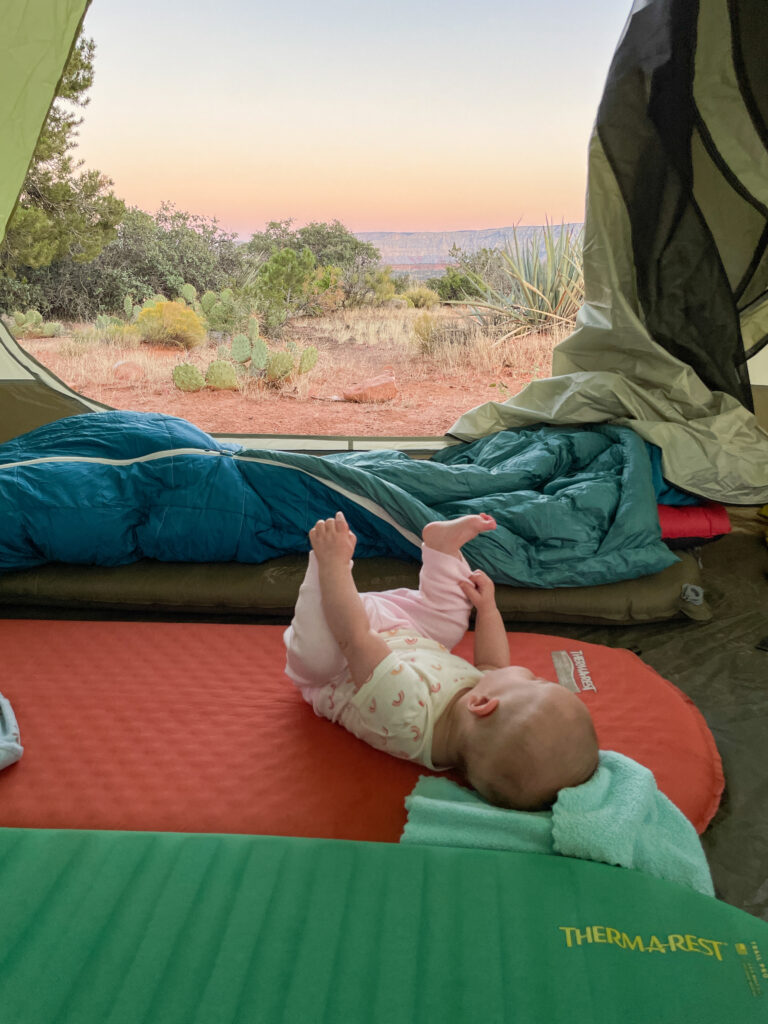
MORE FAQS ON HIKING WITH A BABY
Can you go hiking with a baby?
Yes! You absolutely can go hiking with an infant or baby. It will take more preparation and your hikes might be shorter, but this is a great way to get out with your baby.
What age can a baby go in a hiking backpack?
Most age recommendations for a hiking backpack are when your baby is able to sit upright on their own, which is typically around 6 months old.
At what age can you take a baby hiking?
You can start hiking with your baby as soon as you are feeling up for it. Start with short hikes near your house and build up from there. Only you know how long your baby will tolerate being in a baby carrier.
How should I dress my baby for hiking?
It’s best to dress your baby in layers that you can adjust while out hiking. Keep in mind that your baby won’t be moving, so your baby should be dressed warmer than you. Also protect your baby against the elements like rain, wind and sun.
Can I take my 2 month old hiking?
Yes, you can hike with a newborn as young as 2 months old. Hiking with an infant can be very enjoyable as they are happy to be carried and near you, sleeping on and off during the hike. As mentioned previously, try shorter and easier hikes first to gauge how your baby does.
How to travel with a baby hiking backpack?
If you are planning on hiking while traveling internationally with a baby, get all our tips for flying with a backpack carrier.
What is the best baby carrier for hiking?
The best hiking carrier for a baby is the one that is most comfortable for you and your baby. If your baby is much more content in a soft structured carrier like an Ergo Baby Carrier or the LILLEBaby Complete Airflow 360° carrier, then use that.
If your baby prefers to sit up and see the world, then a hiking backpack carrier for babies might be better suited. Just make sure your baby meets all the recommended height, weight and milestones before moving to this type of hiking backpack for babies.

